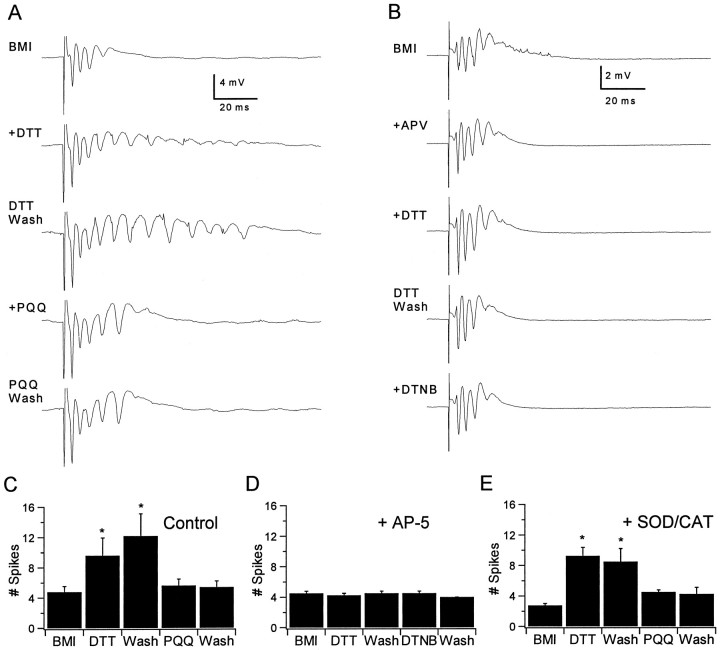Fig. 3.
Redox modulation of bicuculline-induced epileptiform activity. A, The toptrace shows multiple CA1 population spikes evoked by a single stimulus applied to the Schaffer collateral afferents in the presence of 7 μm BMI. Application of 500 μmDTT resulted in an increased number of population spikes in the evoked response (secondtrace fromtop), and this effect persisted after DTT washout (thirdtrace from top). Subsequent application of 100 μm PQQ reduced the number of spikes to the pre-DTT baseline level (fourthtrace from top), and this effect also persisted after PQQ washout (bottomtrace). B, Similar recordings obtained in the presence of 100 μm AP-5 (APV) showed no modulation by redox agents when NMDARs were blocked.C, The bar graphs summarize the effects of DTT and PQQ on evoked CA1 field potentials in low BMI. DTT (0.5 mm) significantly increased the number of population spikes in the evoked response, and this increase persisted after DTT washout. The effect of DTT was completely reversed by PQQ (100 μm), but the number of spikes in the evoked response did not decrease beyond pre-DTT levels. D, The bar graphs illustrate the lack of redox modulation of epileptiform responses in the presence of 100 μm AP-5 (n = 4). E,Identical experiments in the presence of SOD (100 units/ml) and CAT (210 units/ml) showed no differences from those obtained in the absence of SOD and CAT (n = 4), indicating that the effects of PQQ were not mediated by the generation of free radicals.

